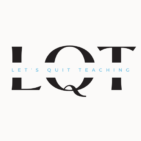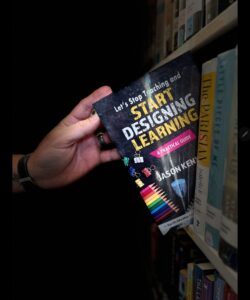While I always try to be in a constant state of reflection, nearing the end of the school year seems to be one of the times when I get together with others and take a long stare into the mirror of the past academic year. What were the successes? What were the celebrations? What were the misses? What are the new opportunities? You know what I love about mirrors? They never lie. They show us the unadulterated truth. That’s why reflection is so important and why we need to have the courageous honesty to look back and see if we are doing what needs to be done for learning in our schools. There are typically four foundations on which all of our reflection and action typically revolve around:
Belief in Our Learners
At the heart of Tier 1 instruction lies the unwavering belief that all students can learn at high levels. This belief is not set aside for just one type of kid. They are all learners. The minute we think “These kids can’t…” then we are already staking our claim and ourselves to status quo. With those thoughts come beliefs. Belief (or lack of belief) feeds our actions. Our actions define our instruction and expectations. And then at the end of the year, we wonder why our “low” kids didn’t grow like we wanted them to?
We teach learners, not labels. If we are going to label kids, then label them all as learners. Learners with the ability to learn at high levels with our help. That is the starting point for all our decisions around learning and instruction.
Belief in Us and Our Abilities
Once we decide and dedicate ourselves to the notion that all of our kids are learners, we then need to shift the focus of our belief to ourselves. As educators, administrators, and support staff, we possess a wealth of knowledge, skills, and experiences waiting to be harnessed. In your school, you have multiple millions of dollars of training and decades (maybe even centuries) of collective experiences waiting to be used. We can’t ignore that we have the power.
This is the beginning of collective efficacy that helps us drive educational excellence. With an effect size of 1.57 or 3 ½ years’ learning potential, this influential factor highlights the power of collaboration and shared responsibility in enhancing learner achievement. By leveraging our collective expertise and working collaboratively towards common goals, we pave the way for transformative learning experiences.
Rejecting Blame and Accepting Responsibility
If there is one thing we are great at, it’s blaming. We’ve all done it. But, blame doesn’t fix anything. We can feel frustrated at some of the challenges we face in our school. We can take a minute to vent and say, “Man! This is hard!” But we can’t live or operate in blame.
Blame says this: The kids didn’t… The parents won’t… The community never… Leadership isn’t… When we blame, we do one of two things: 1. We are saying we don’t want to do the work. 2. We are saying we don’t have the ability to do the work. We’ve already established we have all the knowledge and expertise.
We have to accept the responsibility for what happens for learning in our school. We get what we get. We inherit things. We even make things ourselves that impede our efforts in designing the best learning. The point is this: Whatever we get, our work is in making the difference. We ARE the difference, and we have to accept the responsibility in operating with that power to change all the “can’ts” we come across in our schools into “cans.” That is what education is all about.
Ability + Responsibility + How Learning Works = Design
We first believe in our learners. Then, we believe in ourselves. The next step in the process is learning how learning works. The collective efficacy in the earlier paragraph isn’t some matra or kumbaya moment that changes the learning in our buildings. It starts with belief, yes. But to truly make the changes we want to see, belief needs to be supported with knowledge.
The power of collective efficacy lies in this: Yes, we believe we can make a difference in the learning of our kids. We believe (…) about learning and how it works. We know that it is working because we are seeing the evidence.
We have got to know what science says works for learning. Believe in it, just as we believe in ourselves, and apply it. Applying HOW learning works, to WHAT we teach (our standards) with WHO (our learners) in mind during the process will result in learning designed for all, and design (ES = 0.70 or 1 ¾ years’ learning) has the potential to change everything we want.
So, as we reflect on the past year and start planning for the next, look into the mirror with me.
Say it aloud…
We believe in all our learners.
We believe in our ability.
We accept the responsibility.
We will design the highest quality Tier 1 learning.


